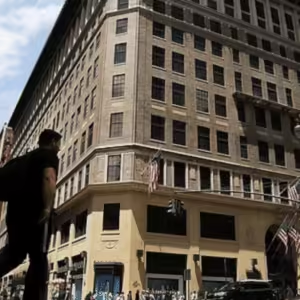
America’s Oldest Department Store Closes Its Doors Following Almost 200 Years
2020 will always be remembered as a year of great upheaval characterized by the coronavirus epidemic, the sad loss of NBA icon Kobe Bryant, and civic disturbance following the murder of George Floyd. Among these social issues, the pandemic’s economic effects did terrible damage to numerous sectors, including retail. Longstanding department businesses, already under strain against the emergence of internet behemoths like Amazon, faced impossible challenges. Among the most notable fatalities was America’s oldest department store chain, Lord & Taylor, which announced closing of all 38 surviving locations following over two centuries in operation.
Founded in 1824, Lord & Taylor boldly claimed to be the first department store in America. Renowned for its exquisite boutiques, smart branding, and dedication to quality, it established a household name across several generations. Renowned for its flagship store on Fifth Avenue in New York City, a monument of luxury shopping and a gathering place for innumerable consumers, the business was Not only did Lord & Taylor offer goods and clothes during its almost 200-year existence, but it also developed into a cultural symbol connected with style and tradition.
Lord & Taylor joined the increasingly numbers of conventional stores trying to survive by declaring for Chapter 11 bankruptcy protection in August 2020. The corporation first intended to restructure its operations while keeping 14 sites operational. But survival became impossible given the ongoing financial pressure and declining in-store visitation. Just a few weeks following the bankruptcy declaration, Lord & Taylor declared the closing of all of its stores and started a large-scale liquidation sale to remove inventory.
The choice signaled the end of an era as Lord & Taylor were among the most prominent victims of the changing retail scene. The department store was purchased by French fashion rental business Le Tote Inc. last year; nevertheless, the new ownership was unable to turn the trend downhill. The epidemic just hastened the difficulties the chain faced and drove it toward its last extinction.
The closing of Lord & Taylor begs issues regarding the destiny of its now-vacant stores as well as the wider consequences for the retail sector. Once mainstays of shopping centers and metropolitan areas, department stores are rapidly vanishing and leaving behind enormous vacant retail locations. These closures affect not just the companies but also the nearby areas, which usually depend on such industries for employment and economic stimulation.
For customers, losing Lord & Taylor marks the end of a shopping experience shaped by elegance, history, and tradition, not only the closing of a store. The issue still is whether fresh companies will arise to cover the hole or if the retail scene will keep turning toward digital channels.
The death of Lord & Taylor serves as a moving reminder of the difficulties experienced by conventional businesses in a society fast changing. Though nostalgia for these venerable companies still exists, the reality of current customer behavior call for creativity and flexibility. The memory of Lord & Taylor and other old companies will endure as markers of a bygone age in American business as the retail scene changes.
Regarding retail, what is ahead? Will in-person shopping see a comeback, or has the digital revolution irreversibly transformed our relationship with companies? Though only time will tell, the demise of Lord & Taylor signals the end of an incredible chapter in American retail history.
Leave a Reply